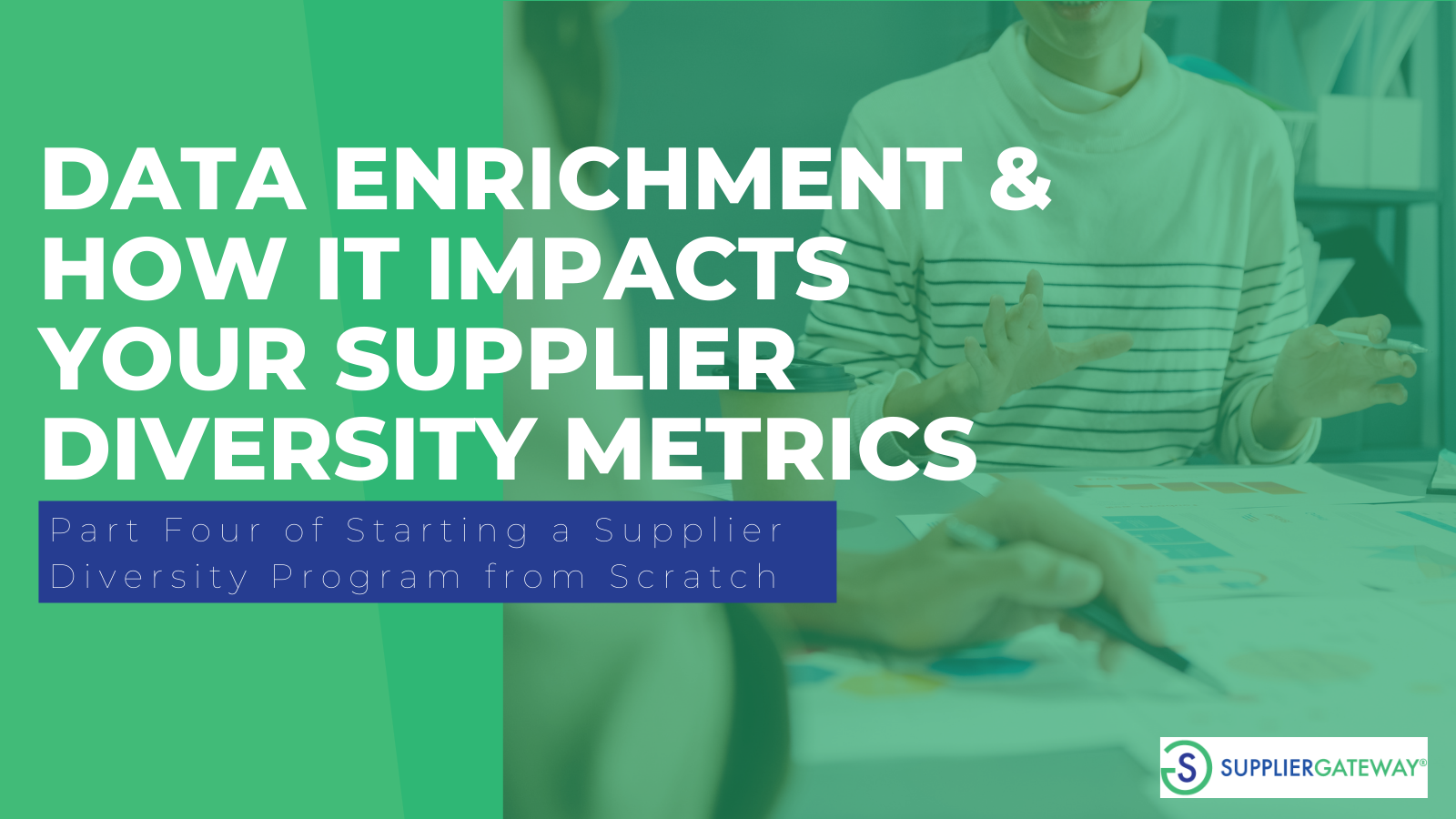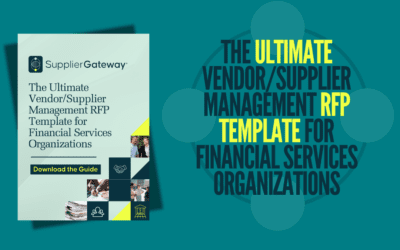
You’ve gotten stakeholder support for a supplier diversity program, defined your program, and written your supplier diversity policy. It’s time to evaluate your current supplier base to identify diverse suppliers you might already be working with.
Establishing baseline metrics for your company’s current engagement with diverse suppliers is of critical importance when starting a supplier diversity program. Without these baseline metrics, your company won’t be able to evaluate how successfully the program is implemented throughout your organization.
Chances are, your company is already working with a number of diverse suppliers and small businesses but doesn’t even know it.
As the saying goes, “You don’t know what you don’t know.” Uncovering and understanding your current engagement with diverse suppliers allows your organization to implement key performance indicators for your new supplier diversity program.
Evaluating your current supplier base for diverse suppliers can be quite a challenging task for many reasons, but the largest reason is that many diverse suppliers aren’t actually certified to begin with.
There are several reasons why a supplier or business may choose not to be certified:
- Cost-prohibitive. Oftentimes, the cost of certification can be a barrier, particularly for smaller companies. Certification can cost thousands of dollars a year, which may not be in the budget for smaller organizations.
- Time-intensive. Most traditional certification processes take an inordinate amount of time to complete. Between paperwork and site visits, a traditional certification can take months to process and even longer to be issued.
- Certification is not all-encompassing. If a business has multiple diversity statuses (i.e., a business that’s primarily owned by a Black disabled woman who’s also a veteran), each of those statuses must be attested to separately. This means that a business owner with multiple diversity statuses has to hold a certification for each of those statuses in order to be officially recognized as diverse in that particular category. The same cost and time attributes apply for each certification, which would have also to be renewed yearly.
- Unaware of the benefits of certification. While the cost and time involved with being certified are major drawbacks, some organizations find that the benefits of being certified outweigh those drawbacks. So many organizations don’t know that companies like yours are actively looking for diversely certified businesses to engage with and, therefore, don’t understand that diversity business certification opens up opportunities for major growth.
Without certifications, there’s no easy way to attest to the diversity of your supply chain. Attempting to fill in the blanks on your own is often a very expensive and time-consuming process that involves dedication to gaining access to databases and then cobbling information together with very little certainty as to the accuracy of your findings. Your company may even find that it needs to develop custom applications to do the job, and this is a huge sink of both time and money.
Because of these hurdles, many organizations use a third-party company (like us!) to do what is known as data enrichment. The supplier data enrichment process looks like this:
- Your company supplies its supplier information to a third-party company.
- The third-party company uploads your supplier information into a system that then “fills in the blanks” of your current supplier information. Third parties fill in missing supplier information via access to hundreds of different data sources that are international, national, and local in nature. These data sources are cross-checked with your current supplier database to find diverse suppliers that you’re already working with.
- Depending on the data your company tracks, a third-party company can also identify Tier 2 spending with diverse suppliers. The inclusion of Tier 2 data paints a much more comprehensive picture regarding your company’s current engagement with diverse suppliers. Tier 2 data does require information from your Tier 1 suppliers, and this process can be a lot more time-consuming.
Once your supplier data has been enriched, you can see exactly how your company currently engages with diverse suppliers. This includes where and how your money with diverse suppliers is being spent. With this knowledge, your company can develop initiatives to adjust or redistribute your current spend.
For example, you may find that while you do spend with small businesses, those small businesses don’t fall within your supplier diversity program’s engagement parameters. You can decide to move that spend to another company that does, engage with new suppliers that meet your program’s criteria, or keep engaging with the current supplier as-is.
Ultimately, you can’t know where you’re going unless you know where you currently are. Evaluating your current supplier base for diverse suppliers gives your company the knowledge it needs to create a robust supplier diversity program that’s constantly improving and evolving.












